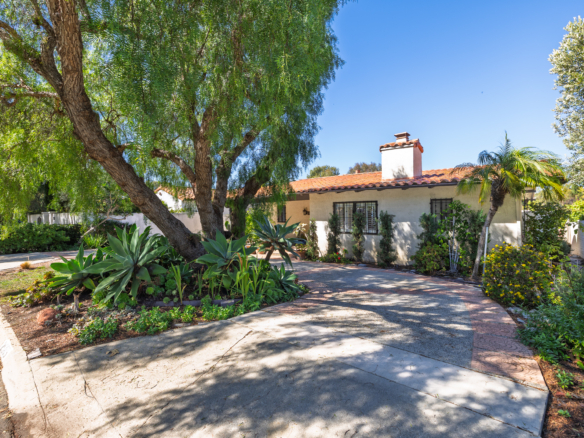Maintaining Your Palos Verdes Home
The article below lists some simple inexpensive maintenance solutions for your Palos Verdes home. The family home is often one of our most valuable assets and it is wise to keep it maintained.
5 Maintenance Tasks to Ignore at Your Peril
By: Jeanne Huber Published: August 3, 2012
Are you a pro at procrastination? Get off the couch for these 5 critical maintenance jobs; left undone, the consequences could cost you thousands — or worse.
Homeownership means regular maintenance and repair chores, but some are more important than others. Here are five that should top your priority list:
1. Make Sure Your Appliances Aren’t Being Recalled
Why it matters: The non-profit “Consumer Reports” magazine wrote an eye-popping piece about how often home appliances catch fire: more than 150,000 residential fires each year from 2006 to 2008, resulting in 3,670 injuries, 150 deaths, and $547 million in property damage. About half the fires appear to have been caused by faulty appliances. Some had been recalled for defects that could cause an appliance fire, but the home owners weren’t aware.
What you need to do: Write down the model and serial number of each appliance, then check at www.recalls.gov for recalls and what action to take if something you own is involved. Keep your list so it’s easy to recheck; it sometimes takes years for problems to become evident. Keep tabs at HouseLogic for notices about recalls.
Maintenance cost: Free
Worst case if you put it off: You don’t learn that your dishwasher or clothes dryer has a safety defect, and the machine catches fire and burns your house down.
2. Check for Leaks and Fix Them
Why it matters: Water does more damage to houses than anything else, since persistent leaks lead to mold and mildew, rot, and even termites and carpenter ants (they like chewing soggy wood since it’s soft). Yet if you fix a leak soon after it starts, there may be no long-term damage at all.
What you need to do: Inside, keep your eyes open for dark spots under pipes inside sink cabinets, stains on ceilings, toilets that rock, and of course drips. At least once a year, inspect the roof. If you find leaks, fix them immediately. Otherwise, call in a plumber.
Maintenance cost: Negligible for a simple fix, such as a new washer. A visit from a plumber might set you back $250; a roof repair, a few hundred dollars to $1,000.
Worst case if you put it off: Drips ruin the cabinet under the kitchen sink, and run down into the floor sheathing and joists underneath, so you need a structural repair, plus new cabinets and new kitchen flooring. Or the roof rots, so you need a new roof and repairs to rooms directly beneath.
3. Test Your Sump Pump and Backup Pump (or Install a Backup Pump If You Don’t Have One)
Why it matters: The middle of a storm isn’t the time to discover your basement sump pump is clogged, nor is it the time to begin planning for a backup pump. You need them ready before the water arrives.
What you need to do: Fill the sump pump pit with water and make sure the pump switches on and sends water out the discharge line. If you have a backup pump, repeat the test, but unplug the main pump first. If the backup pump runs on batteries that are more than two years old, replace your sump pump. If you don’t have a backup pump and are on municipal water, get one that runs on water pressure. If you’re on well water, your only option is the battery kind.
Maintenance cost: Testing is free; a water-powered backup sump pump, including installation, costs $150-$350; a new battery for a battery-operated sump starts around $200.
Worst case if you put it off: The pump or pumps don’t work when you need them and your basement floods, ruining everything in it and forcing you to tear out drywall and carpeting.
4. Renew the Finish on Your Hardwood Floors
Why it matters: Every wood floor needs to be refinished periodically, but the trick is to get to the job before the old finish wears through. Then you can apply a fresh coat without having to sand into the wood. Since sanding wears away some of the wood, being able to skip that step can extend the life of your floor by decades.
What you need to do: If your floor is dull but OK otherwise, repair scratches and apply a hardwood floor refinisher ($6-$18 per quart). If the old finish is really scratched up, call in a pro to buff it and apply a fresh finish.
Maintenance cost: If you just need the refresher coat and apply it yourself, you can do 500 sq. ft. for around $25. If you hire a pro, figure on $1 per sq ft.
Worst case if you put it off: The finish wears through. If your floor is thick enough to sand, expect to spend $2.50 per sq. ft. for a new finish. If the floor can’t be sanded, you’ll need a whole new floor — $8-$20 per sq. ft., if you stick with wood.
5. Protect your Foundation
Why it matters: If anything goes wrong with your foundation walls — serious cracks, uneven settling — you could be in for one of the most expensive home repair jobs possible.
What you need to do: Every year, check to make sure the soil around your house slopes away from your foundation walls at least 6 inches over 10 feet (rain gutter downspouts should extend at least 5 feet away from your house).
That slope keeps water from getting down right next to your foundation, where it could cause basement walls to lean, crack the masonry, and cause leaks. (For houses with crawl spaces, keeping water away makes sure excess water doesn’t pool underneath your floor, making for damp conditions that encourage mold, rot, and insects.)
Maintenance cost: Topsoil is $10-$20 per cubic yard, plus delivery. You’ll pay $50-$100 per cubic yard if you buy by the bag.
Worst case if you put it off: Hydrostatic pressure causes your foundation to settle, cracking your basement walls. A full excavation is necessary to stabilize, repair, and seal the foundation walls — a $15,000 to $40,000 job.
Visit HouseLogic.com for more articles like this. Reprinted from HouseLogic.com with permission of the NATIONAL ASSOCIATION OF REALTORS®.




